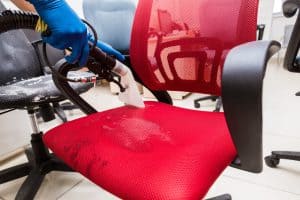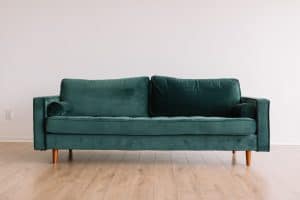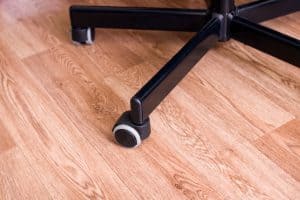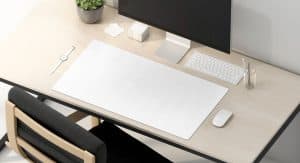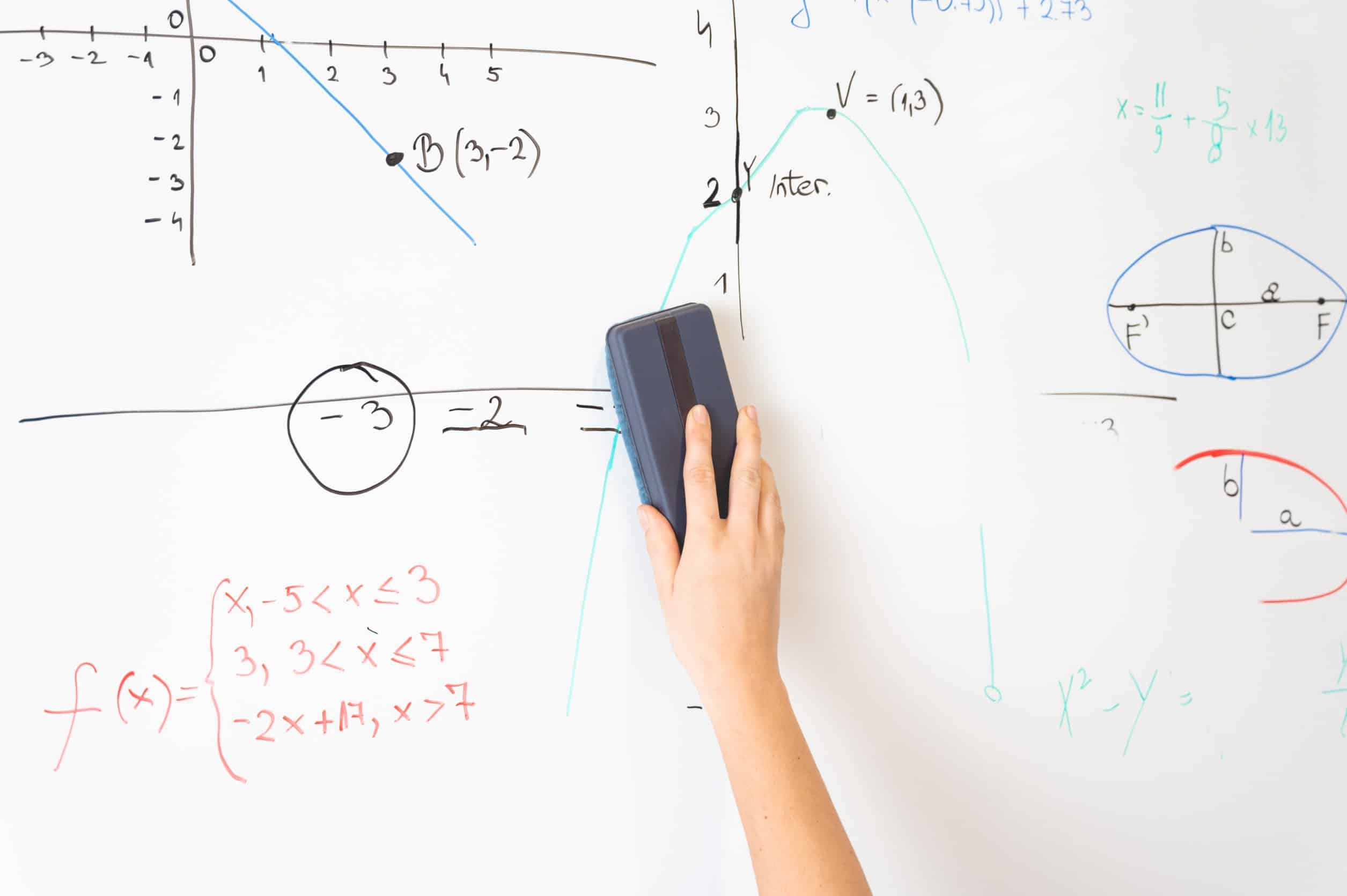
Whiteboards, also known as dry-erase boards, are a staple for offices, but most of us probably remember them from our childhood years in school. The smell of the marker alone can easily bring you back to the old days, but most of your memories are probably as blurry and muddy as the old whiteboard in your classroom, marked with dried ink stains.
Did you, like me, think that those dry-erase boards were simply unsalvageable? Surely, someone would have done something if they could, right? Well, that’s not entirely true.
Whiteboards have a limited lifespan, but it’s up to you to extend this lifespan by taking good care of it. Even if your whiteboard looks like it took quite a beating, there are still some steps you can take to breathe a second life into it.
This is why in our post today, we’ll tell you all about what to use to clean a dry erase board, how to clean a whiteboard that won’t erase, as well as how to maintain whiteboards to prolong their lifespan.
However, you first need to know what type of whiteboard you’re dealing with.
What Types of Whiteboards Are There?
There are mainly three types of dry-erase boards out there:
- Melamine whiteboards,
- Glass whiteboards, and
- Porcelain whiteboards.
In addition to these, there are also printed whiteboards featuring acrylic surfaces prone to scratches and staining and are not as durable as other types.
Glass and porcelain whiteboards are much more durable, less prone to staining than the other types, and can withstand harsher cleaning agents without any damage occurring on the surface.
The most popular type of whiteboard, which is the one we usually use in our schools and offices, is the melamine whiteboard. In the next section, we’ll talk about cleaning solutions you can safely use on melamine boards, which can also be applied to porcelain and glass boards.
What to Use to Clean a Whiteboard?
Ideally, whiteboards should be cleaned using a whiteboard cleaning solution that you can find at most stationery or office supply stores. Most cleaning solutions come in an easy-to-use spray bottle. Some may even include a reusable cloth or disposable wipes to clean the surface with.
If you don’t have the cleaner product at hand, you can easily create your own cleaning solution with products you can find at home. Follow this recipe for a strong cleaning solution that should take care of the nastiest marks:
- 4 tbsp dish soap,
- ½ tsp white vinegar, and
- 450 ml water.
The best part about this solution is that it’s a multi-purpose cleaning agent. You can use this solution on your windows and other glass surfaces to remove stubborn water stains easily.
You can also create this mixture without the dish soap, and it should still be able to take care of most stains on your whiteboard. Simply mix equal parts of water and white vinegar to create a saturated concoction that works without the dish soap.
A good alternative to white vinegar is using rubbing alcohol. Mixing equal amounts with water should do the trick, but it should be noted that rubbing alcohol is a harsher cleaning agent compared to vinegar, and it shouldn’t be your first choice for cleaning a whiteboard.
Additionally, if you don’t have any of the above laying around in your house, you might have one of these instead, which should still work:
- Hand sanitizer,
- Peroxide,
- Liquid soap,
- WD-40 grease spray, and
- Nail polish remover.
If you decide to use nail polish remover, make sure that it’s not the acetone-free kind, as acetone is needed to clean the surface properly.
Now, let’s take a look at how you can clean your whiteboard regularly to avoid permanent stains.
How to Clean a Whiteboard Regularly
You should clean your whiteboard daily to keep it in the best possible condition and prolong its lifespan. If that’s not possible, cleaning it every other day should do the trick as well.
For daily cleaning, all you need are some water and a piece of cloth. To remove any markings, wet the cloth with water and scrub the board’s surface. If the markings are still fresh, you can even wipe the scribbles off the board with a dry towel.
Any sticky material that’s left on the surface can be removed by putting rubbing alcohol or WD-40 on a paper towel or cloth and gently wiping it down.
Before starting your daily whiteboard cleaning, remove all the stuff (like post-its and other materials) from it first. After that, wet the whiteboard’s surface with water and wipe it down with an ammonia-free cleaning product. You can use one of the products or recipes we mentioned above.
Finally, blot up any remaining liquid with paper towels or any absorbent cloth, then polish with a dry -preferably microfiber or cotton- cloth until no visible streaks remain. If you can spare the time, allow your whiteboard to air dry for one hour before using it again.
However, you may be working at an office where the whiteboard displays the tasks and planning for the week or the whole month. Wiping down such important information may easily cause things to get mixed up around the office, but if the ink stays on for too long, it may dry out and can make cleaning much harder. What a dilemma!
Luckily, we have some tips on how you can deal with dried ink and other permanent stains on your whiteboard as well.
How to Remove Permanent Stains Off Your Whiteboard
Most of us have either written on a whiteboard with a permanent marker by mistake or at least witnessed someone else do it. It’s not ideal, of course, but it’s not the end of the world either.
Alternatively, you may be using a suitable marker, but If the ink stays on for too long, it may also become permanent and stain your whiteboard. These markings are called “ghosting,” as you can see the marks of the ink even after you attempt to erase it, but there’s an easy way to fix these stains that seem “permanent.”
Take out your whiteboard marker and start drawing over the markings that you want to remove. If it’s a stain that’s concentrated in one area, you can simply “color in” a whole area of the whiteboard with the marker. The fresh ink should soften the old, dried ink that’s left on the surface in a few seconds.
Wipe down your whiteboard with a felt eraser, and the ghosting should disappear. If it’s an old stain that’s a bit more stubborn, you can repeat this process as many times as needed.
If it’s not a ghosting issue, you can remove other general stains by following these steps:
- Find out what created the stain and remove it as much as possible before you begin cleaning,
- If it’s a permanent marker or pen ink, wipe off what you can with an alcohol-based cleanser,
- Wipe down with a cleaning solution that doesn’t contain ammonia, which may damage the finish of melamine boards.
In addition to cleaning, there’s one more thing you can do to keep your whiteboard usable for longer, and it’s called reconditioning.
How to Recondition a Whiteboard
Reconditioning is a process that can be applied to get more use out of your old whiteboard before it’s finally time to replace it. You can use a wax called carnauba wax, which is used to fix and finish car paints to breathe new life into your whiteboard. Simply follow these steps:
- Clean the surface thoroughly and make sure that there isn’t any dust or residue on the surface,
- Apply the wax thinly with the pad that’s provided with the wax (You can use a sponge for this as well),
- Let the surface dry for at least a day (48 hours if needed),
- Once dry, wipe away the excess wax that’s left on the surface with a soft cloth (ideally microfiber) and continue until the surface is smooth.
In addition to taking care of your whiteboard, you should also clean your erasers regularly. Here’s how to do it.
How to Clean a Whiteboard Eraser
Just like your whiteboard, your whiteboard eraser should be cleaned regularly as well to prevent it from staining your whiteboard. Cleaning regularly will keep the eraser from getting overly saturated with ink.
If you have a felt eraser, you can wipe the surface clean with a damp towel or sponge and then dry it off with a dry towel. Don’t worry: the felt won’t be damaged by water and will not fray or come apart.
Alternatively, If you have a plastic or rubber eraser, you can wash it with some rubbing alcohol to eliminate any residue that may have remained.
Conclusion
Whiteboards are an integral part of our lives. They are used at schools and offices and can be used in creative ways to increase productivity and motivation.
In our post today, we explained all the ways you can clean a whiteboard, such as painting it with an erasable marker and wiping it or using homemade solutions. We also shared some of our recommendations on what to use when cleaning, including rubbing alcohol, WD-40, and acetone.
Lastly, we mentioned that reconditioning your whiteboard with wax can prolong its life, and we also shared some steps on how to clean your eraser with a damp towel, which should prevent it from staining your board.
All of these recommendations should be sufficient for maintaining a stainless whiteboard. We hope that these tips have been helpful in getting your whiteboard back to its squeaky-clean, original state!
